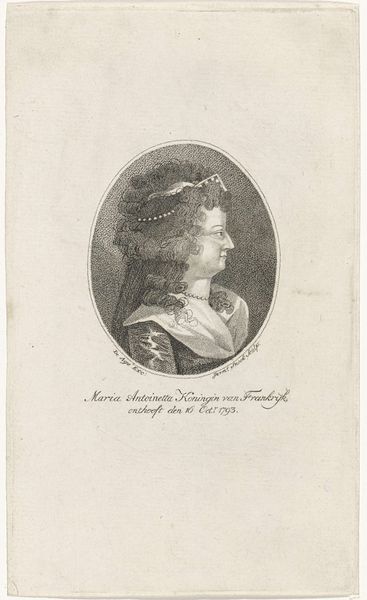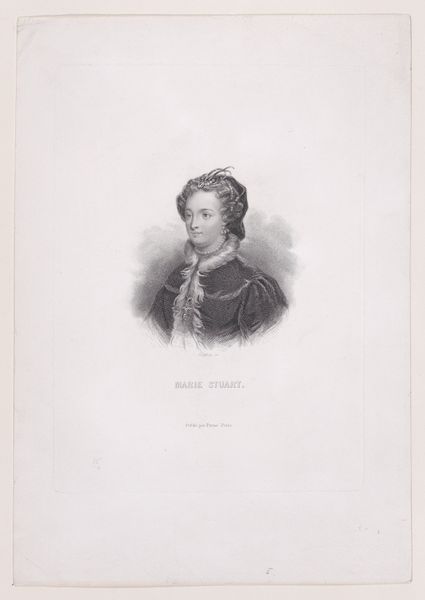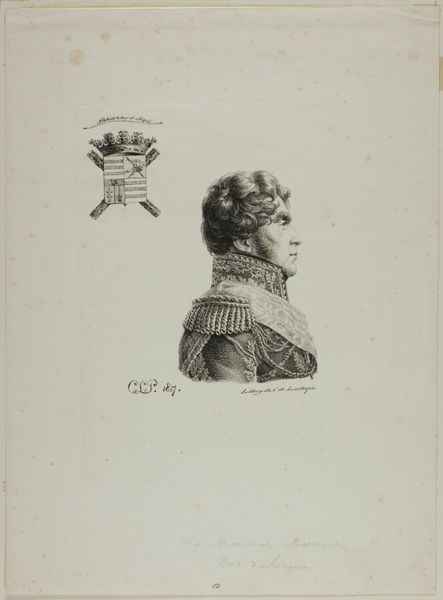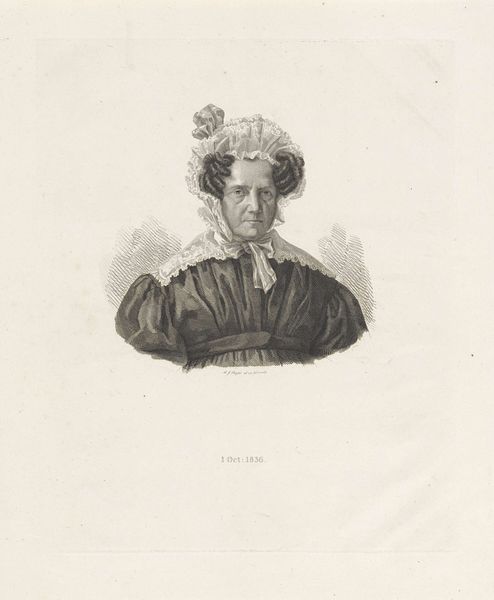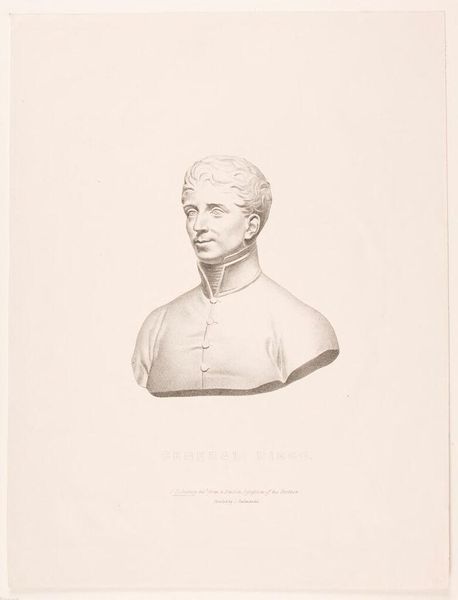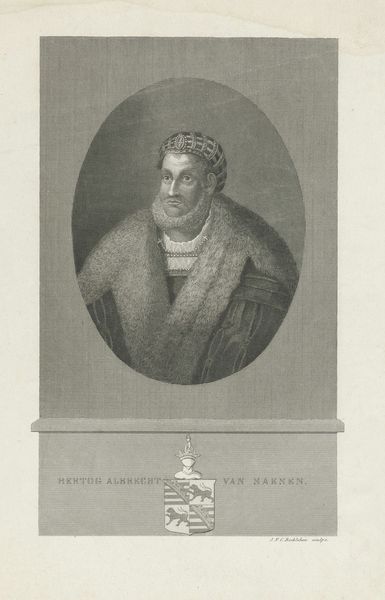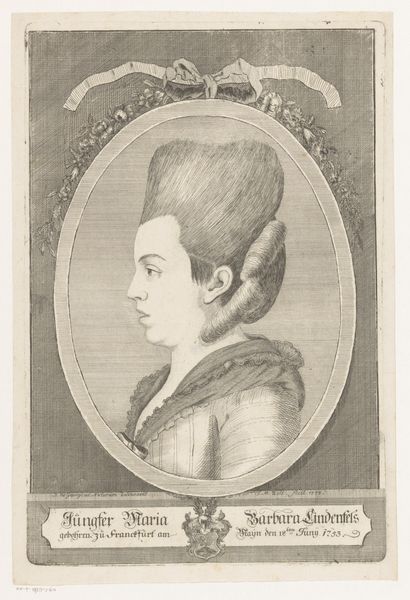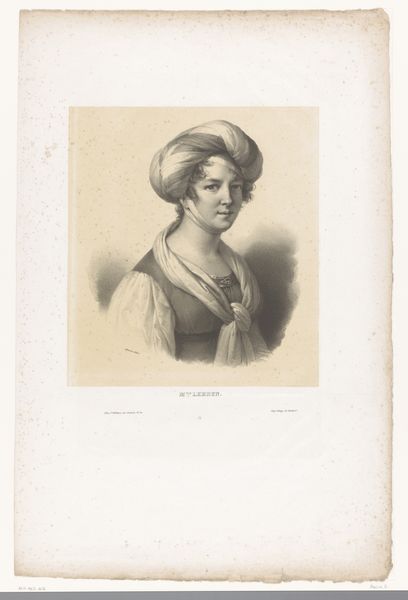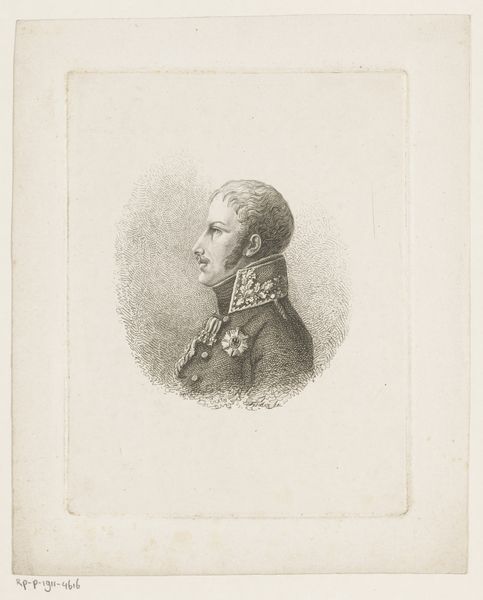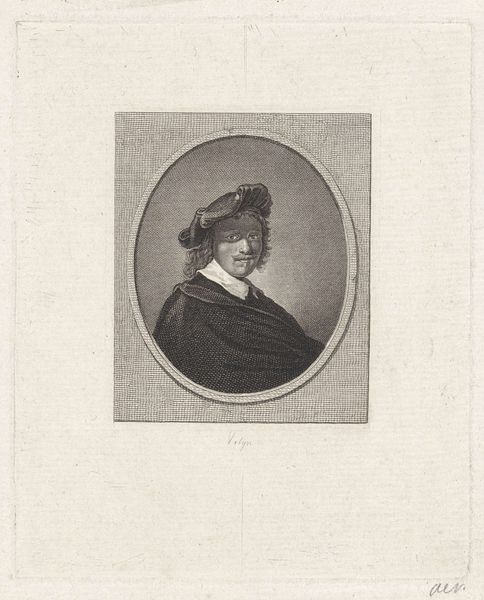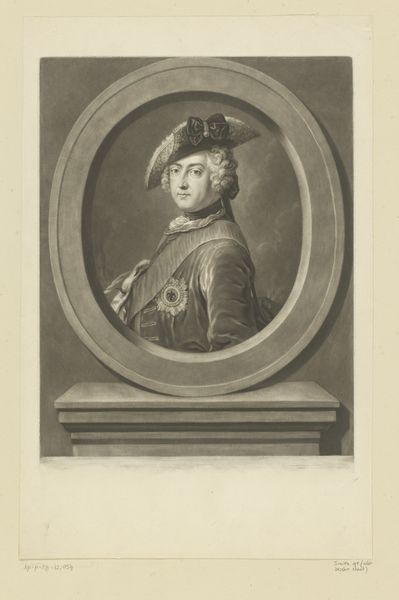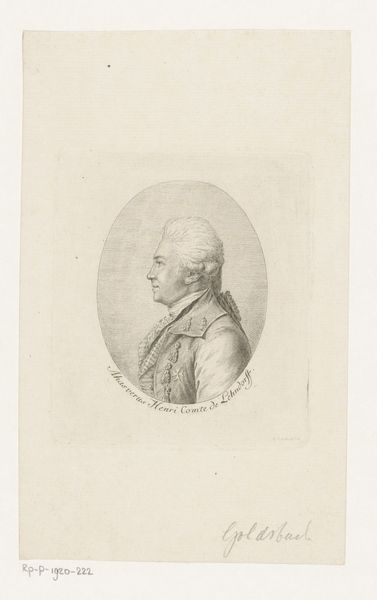
print, engraving
#
portrait
# print
#
old engraving style
#
retro 'vintage design
#
figuration
#
romanticism
#
academic-art
#
engraving
Dimensions: height 220 mm, width 155 mm
Copyright: Rijks Museum: Open Domain
Editor: Here we have N.M. Schild’s "Portret van Juliana de Lannoy," an engraving dating to about 1837-1840, from the Rijksmuseum collection. I’m immediately struck by the sitter’s elaborate hairstyle; it makes me wonder about beauty standards of the time. How do you interpret this work? Curator: That hairstyle isn't merely a fashion statement, is it? The height and volume of it signaled social status and adherence to very specific, often oppressive, ideals of femininity. Consider how this image operates within a larger context. What does it mean to depict a woman of stature with such careful attention to detail? Editor: So, it's not just a pretty picture but a carefully constructed representation of power and social standing? Curator: Exactly! It demands we examine who has the power to represent whom, and for what purpose. Think about how portraiture has historically served to legitimize the ruling classes, and how the objectification of women persists even today. In what ways could we view this as perpetuating gender roles? Editor: I see what you mean. Her pose and expression seem very controlled. Was she allowed any agency in how she was presented? Curator: A vital question! The subject's apparent passivity is telling. Her clothing and hair are meant to convey an idea of what? Was this designed for her benefit, or the benefit of observers of that period? How much control did she really have? These portraits told more about the dominant patriarchal values than the individual depicted. Editor: This has completely changed my perspective! It’s not just an old portrait; it's a mirror reflecting complex social dynamics and power structures. Curator: Indeed. By analyzing historical representations like this, we can gain insights into persistent inequalities.
Comments
No comments
Be the first to comment and join the conversation on the ultimate creative platform.
